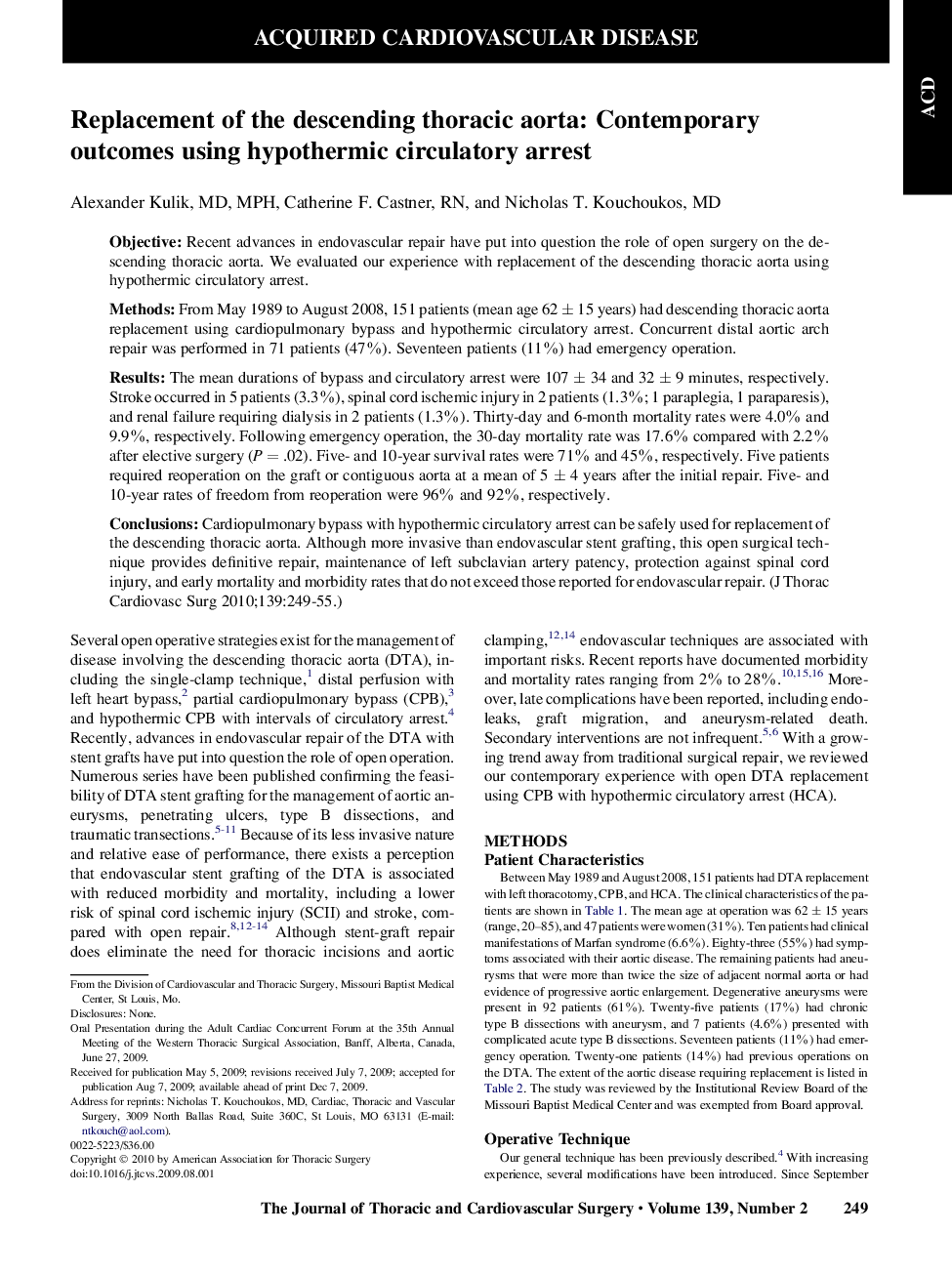| Article ID | Journal | Published Year | Pages | File Type |
|---|---|---|---|---|
| 2984523 | The Journal of Thoracic and Cardiovascular Surgery | 2010 | 7 Pages |
ObjectiveRecent advances in endovascular repair have put into question the role of open surgery on the descending thoracic aorta. We evaluated our experience with replacement of the descending thoracic aorta using hypothermic circulatory arrest.MethodsFrom May 1989 to August 2008, 151 patients (mean age 62 ± 15 years) had descending thoracic aorta replacement using cardiopulmonary bypass and hypothermic circulatory arrest. Concurrent distal aortic arch repair was performed in 71 patients (47%). Seventeen patients (11%) had emergency operation.ResultsThe mean durations of bypass and circulatory arrest were 107 ± 34 and 32 ± 9 minutes, respectively. Stroke occurred in 5 patients (3.3%), spinal cord ischemic injury in 2 patients (1.3%; 1 paraplegia, 1 paraparesis), and renal failure requiring dialysis in 2 patients (1.3%). Thirty-day and 6-month mortality rates were 4.0% and 9.9%, respectively. Following emergency operation, the 30-day mortality rate was 17.6% compared with 2.2% after elective surgery (P = .02). Five- and 10-year survival rates were 71% and 45%, respectively. Five patients required reoperation on the graft or contiguous aorta at a mean of 5 ± 4 years after the initial repair. Five- and 10-year rates of freedom from reoperation were 96% and 92%, respectively.ConclusionsCardiopulmonary bypass with hypothermic circulatory arrest can be safely used for replacement of the descending thoracic aorta. Although more invasive than endovascular stent grafting, this open surgical technique provides definitive repair, maintenance of left subclavian artery patency, protection against spinal cord injury, and early mortality and morbidity rates that do not exceed those reported for endovascular repair.
